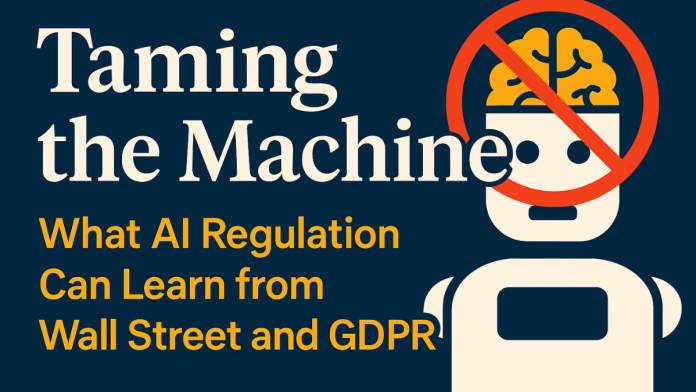Thank you dear subscribers, we are overwhelmed with your response.
Your Turn is a unique section from ThePrint featuring points of view from its subscribers. If you are a subscriber, have a point of view, please send it to us. If not, do subscribe here: https://theprint.in/subscribe/
Artificial Intelligence (AI) is no longer just powering sci-fi fantasies—it’s embedded in our banks, transport systems, medical diagnostics, and social media feeds. But as AI systems become more autonomous and interconnected, the risk of massive, opaque failures multiplies.
We’ve already seen how one faulty update—like the recent CloudStrike outage—can cripple infrastructure worldwide. That single error grounded flights, shut down hospitals, disrupted financial transactions, and paralyzed global enterprises in over 100 countries. Now imagine that failure triggered by a black-box AI system that even its creators can’t fully explain.
Without intervention, we are heading toward a world where a single algorithmic misfire could shut down planes, hospitals, power grids—and no one will know why.
The Patchy Global Response
AI regulation today is fragmented and reactive:
- The U.S. and U.K. prefer a post-facto model, relying on fines and lawsuits to deter harm. But in AI systems, accountability is difficult when outcomes are automated, non-linear, and untraceable.
- The EU’s approach involves labeling AI by risk category. While admirable in intent, it assumes regulators can forecast which systems will become dangerous—an almost impossible task.
- China’s model focuses on central control. Yet even tightly monitored systems can spiral beyond human oversight.
These frameworks all fail to address the core reality: we cannot predict where AI is going. So instead of control, we need resilience.
And that’s where Wall Street and GDPR both offer valuable lessons.
Wall Street Wisdom: Structure Over Prediction
Financial markets are also complex and volatile—but we don’t try to predict every crash. Instead, we build robust regulations to manage risk and contain damage.
Here’s what AI can borrow:
1. Agnostic Regulation
Just as the SEC (U.S.) and SEBI (India) regulate financial behavior without predicting market direction, AI regulators should be agnostic to outcomes. Focus not on what AI will do, but on ensuring safe, auditable structures regardless of its evolution.
2. Circuit Breakers & Kill Switches
Stock markets halt trading during volatility. AI systems should have built-in emergency shutdowns, manual overrides, and watchdog layers—especially in critical sectors like defense, finance, and healthcare.
GDPR Principles: Human-Centered AI
While financial models offer system-level safeguards, GDPR provides personal-level protections that AI regulation desperately needs.
3. Mandatory Explainability Audits
Just as public companies face audits, AI systems—especially high-impact ones—must undergo regular explainability reviews. Developers must prove:
- Why the AI made a specific decision
- What data it used
- Whether it can be challenged
This echoes GDPR’s “right to explanation”—empowering individuals to challenge automated decisions that affect them.
4. Data Minimization & Purpose Limitation
GDPR mandates collecting only necessary data for a specific purpose. AI models should follow suit:
- No hoarding of personal data “just in case”
- Strict boundaries on how data is used or reused
- Stronger guardrails on training datasets
5. User Consent and Transparency
GDPR requires informed consent. AI users should know:
- When they’re interacting with AI
- What data is being used
- What the model is trying to achieve
This is especially important for generative AI, surveillance systems, and behavioral targeting tools—where algorithmic nudging can shape decisions without users realizing it.
6. Impact Assessments Before Deployment
GDPR introduced Data Protection Impact Assessments (DPIAs) for high-risk data processing. AI regulation could adopt a similar requirement:
- Before deployment, evaluate the potential societal harm
- Include bias testing, adversarial stress-testing, and misuse scenarios
Compartmentalization: Avoiding Systemic Collapse
In finance, conglomerates can’t control both industrial operations and banking to avoid systemic risk. AI systems need the same logic.
We must avoid overly integrated AI networks. One system shouldn’t simultaneously manage:
- Transportation networks
- Medical diagnostics
- Power grid operations
Silos and isolation ensure that one failure doesn’t take down everything else.
Conditional Access and Global Compliance
As with financial exchanges, AI deployment should require regulatory clearance. If you sell or operate AI in a country, you must:
- Adhere to national standards (like SEBI or SEC equivalents)
- Provide auditable documentation
- Accept local oversight
This isn’t protectionism—it’s digital sovereignty.
A Dedicated AI Regulator
Eventually, we’ll need a regulatory body—an “AI SEBI” or “AI SEC”—to:
- Set explainability and risk thresholds
- Enforce compliance and audits
- Suspend unsafe models
- Oversee long-term impact assessments
And while a global AI framework may be ambitious, coordination among the top 5–6 AI powers is feasible—and urgently needed.
Regulate Before It’s Too Late
AI hasn’t crashed the world—yet. But neither had the financial system before 2008. Complacency always comes before collapse.
AI is already shaping legal decisions, economic choices, and healthcare outcomes. It deserves at least the same safeguards we apply to stock trading and personal data.
Borrow from Wall Street for system-level controls. Borrow from GDPR for individual protections. Do it now—before the machine runs beyond our reach.
These pieces are being published as they have been received – they have not been edited/fact-checked by ThePrint.


